Taken on Nikon 300mm f/2.8G + TC-20E III on a tripod day. I saw this bird eating the flowers off this plant along the side of the road. At 600mm, I actually had to back-up. Never happened like this before.
I think this was the first time using this combination that I had to back away from the subject. Every other time, 600mm is not close enough.
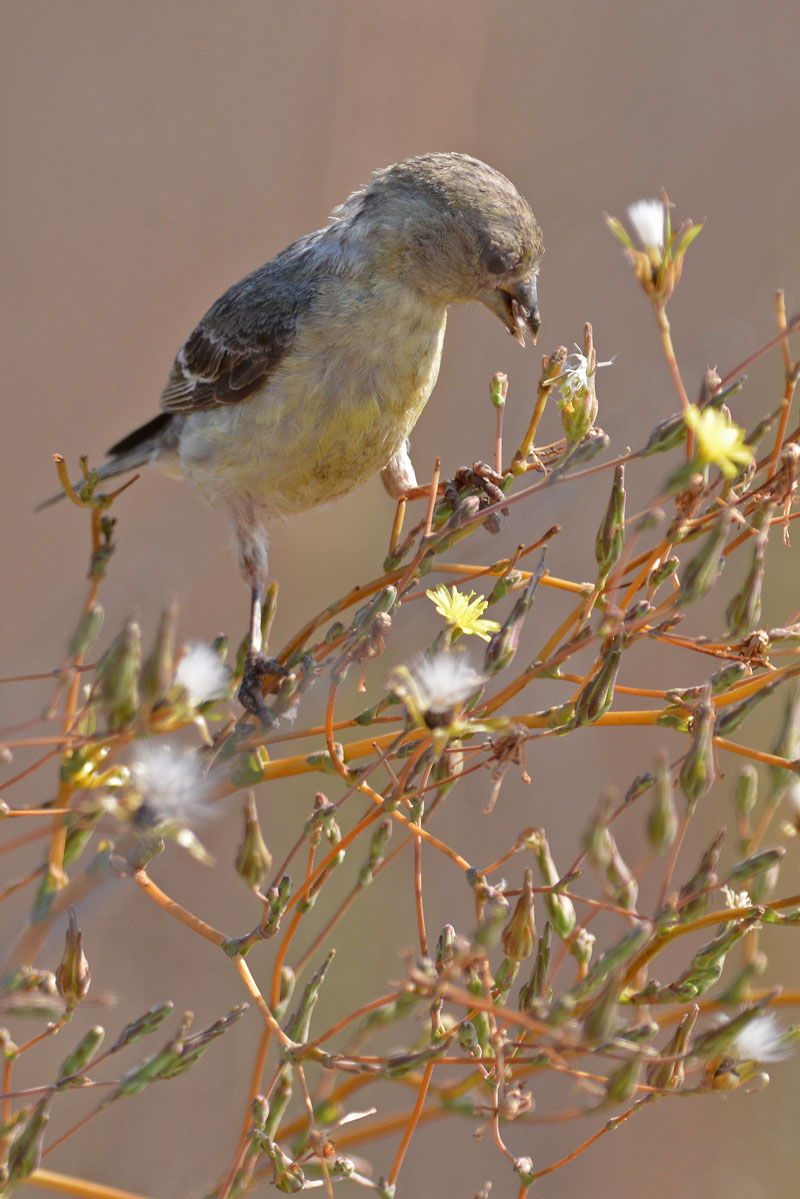
Nikon D800, AF-S VR Nikkor 300mm f/2.8G IF-ED II, ISO 640, 600mm, 0 EV, f/8, 1/640s
A lot of these birds were lined up along the edge of the gutter. Even more were just hanging out along the sloped roof. Despite a quick search, I’m still stumped as to the name of the bird.

Nikon D800, AF-S VR Nikkor 300mm f/2.8G IF-ED II, ISO 560, 600mm, 0 EV, f/5.6, 1,2000s
I had already reached the not-so-scenic pond near one of the exits to the Shoreline Regional Wildlife Area when I saw one Snowy Egret chase another one away. Although I was on my way out, I decided to stay and watch. Could be interesting.

The one being chased was an adherent of non-violence. It turned the other cheek and skipped away.

But, was that good enough?
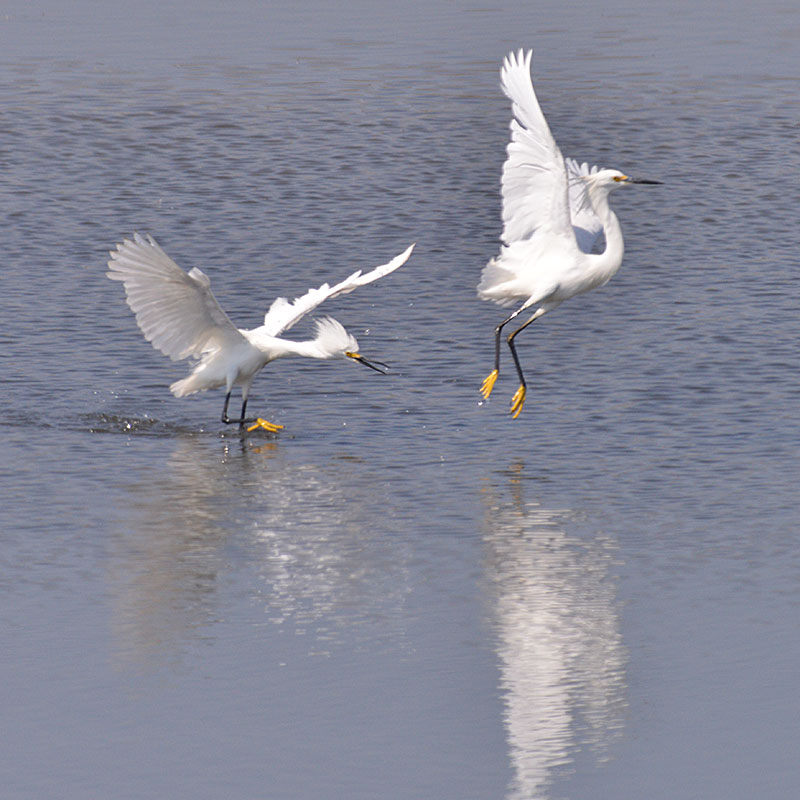
No. Snap! Not fast enough.
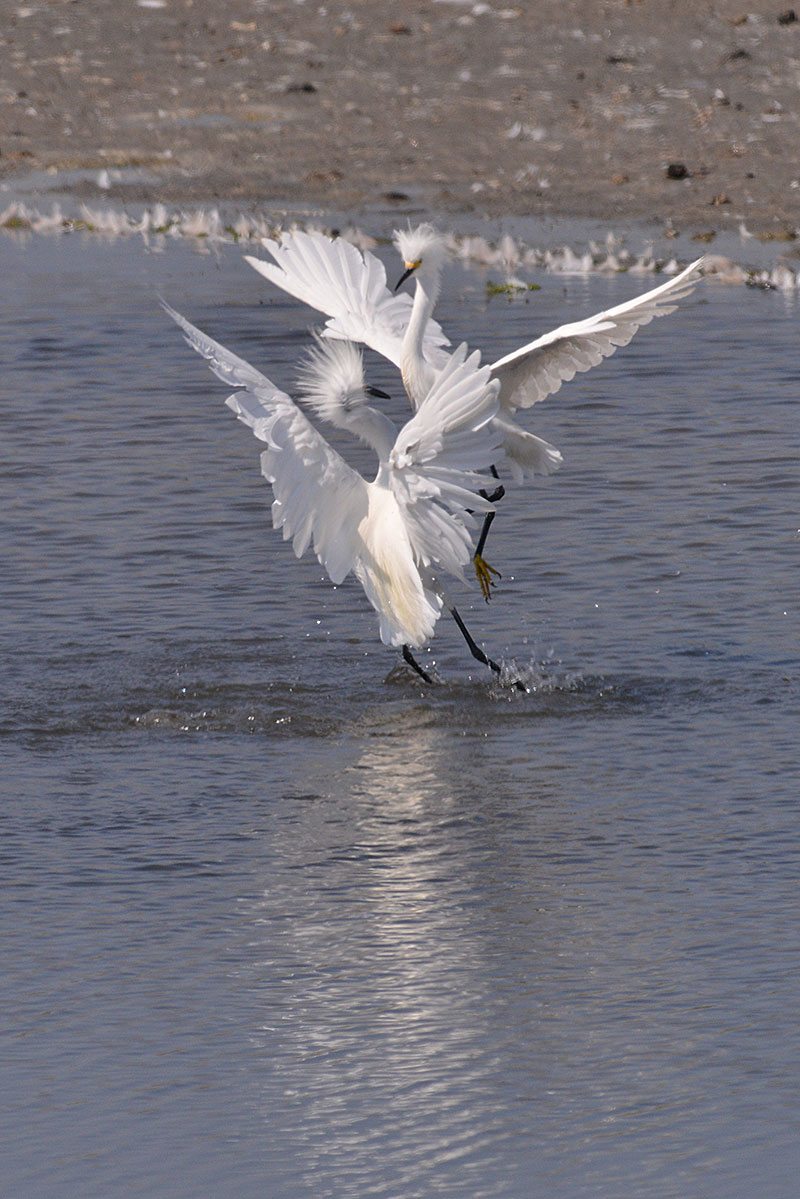
And the fight was on.
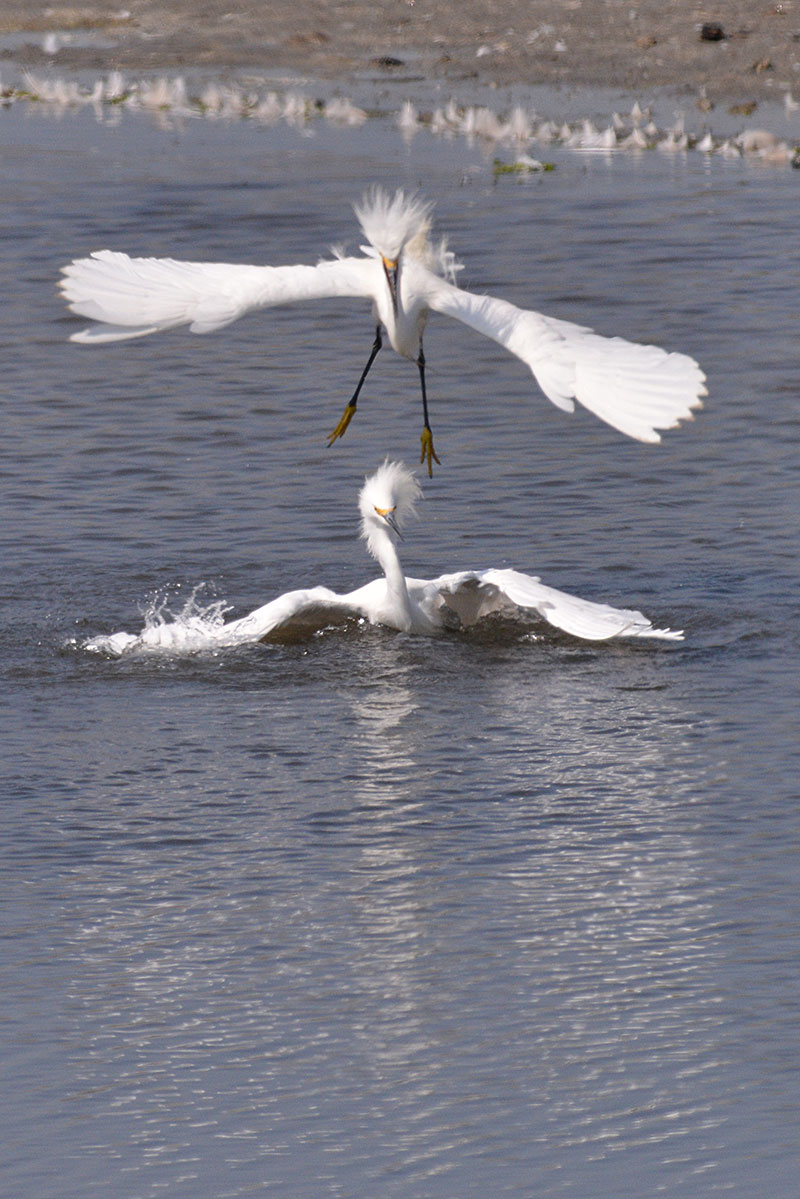
Victory!
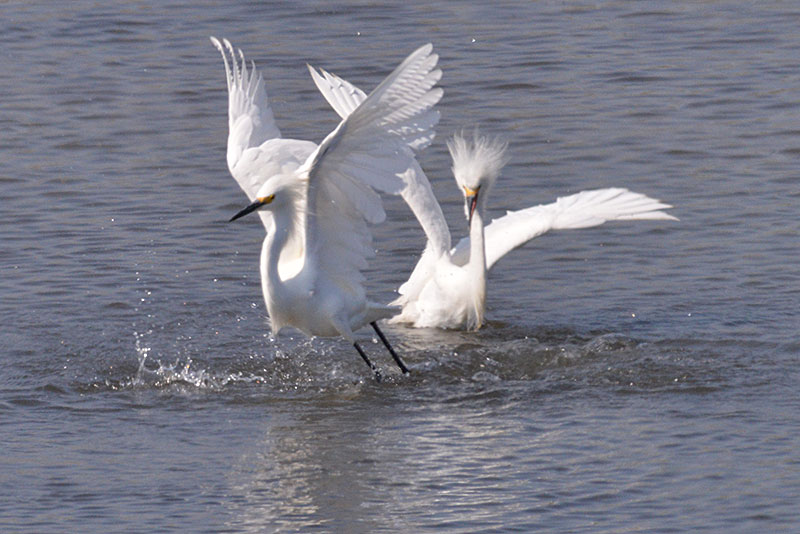
And the loser picked itself up…
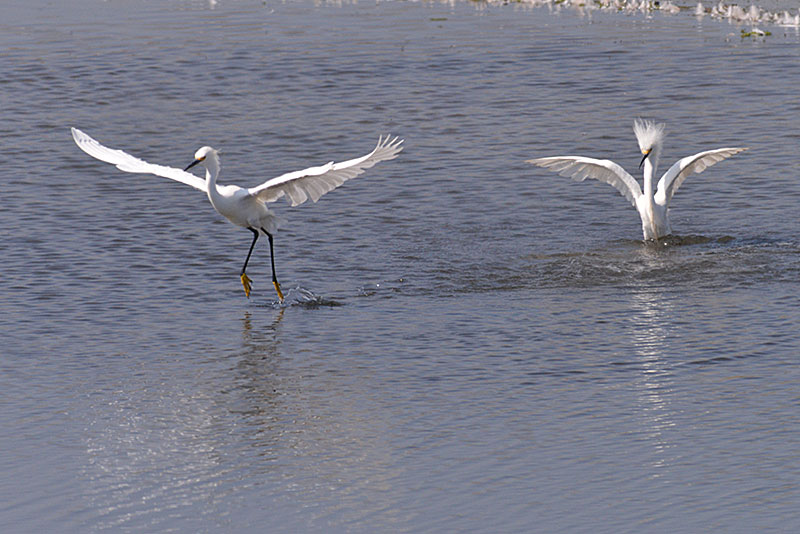
And flew away.
Yes, when walking through the marsh, the black-necked stilt does get muddy feet.
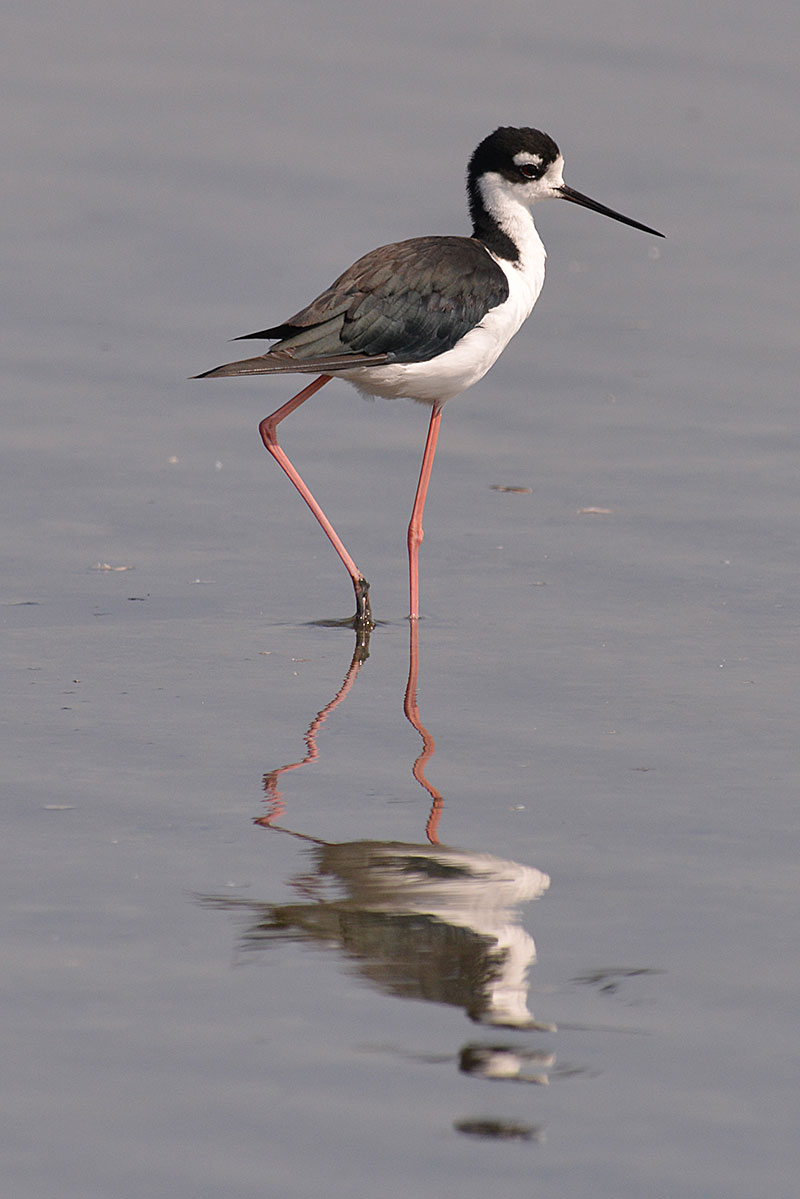
Nikon D800, AF-S VR Nikkor 300mm f/2.8G IF-ED II, ISO 450, 600mm, f/8, 1,200s
I was not entirely satisfied with some earlier photos, so I brought out the tripod this morning. The tripod is simpler and practically fool-proof, unlike the monopod. I was using the 300mm f/2.8G and the TC-20E III AF-S Teleconverter. I liked the combination.
A pair of Canada Geese (Branta canadensis) getting a running start before they take off.
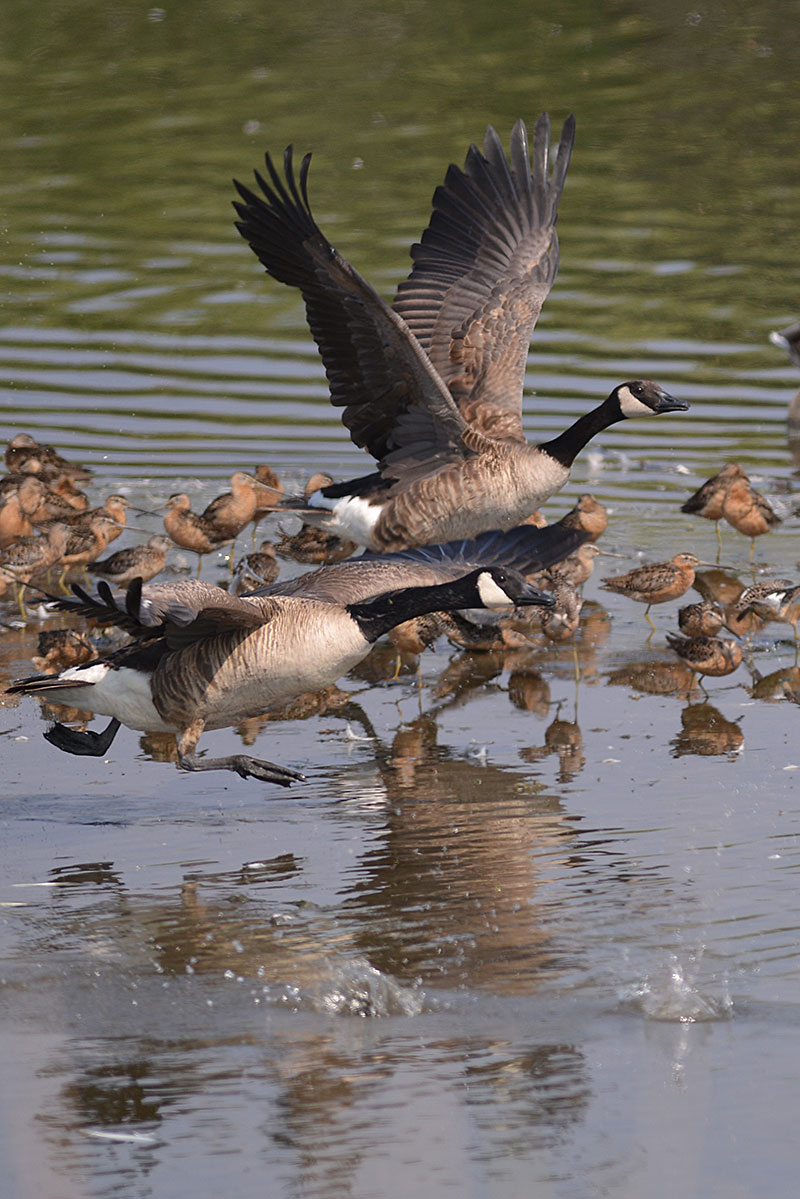
Nikon D800, AF-S VR Nikkor 300mm f/2.8G IF-ED II, ISO 100, 300mm, f/2.8, 1/2,000s
I first saw the black-necked stilt on July 17, 2013 at 8:54 A.M. Looking at the tide charts, low tide was 1:20 A.M. and high tide was 7:59 A.M. So, this was about an hour after high tide.
Last week, not many birds were in the marsh in the morning. Low tide was round 9:00-10:00 A.M., as I discovered when I went out to look for birds and found the marsh pretty much drained. So, I have to look at the weather (sunny or overcast), tides and time of day. High tide in the evening is not the same as high tide in the morning.
Looks like the cycle will be reversing, so hopefully this will be a good week.
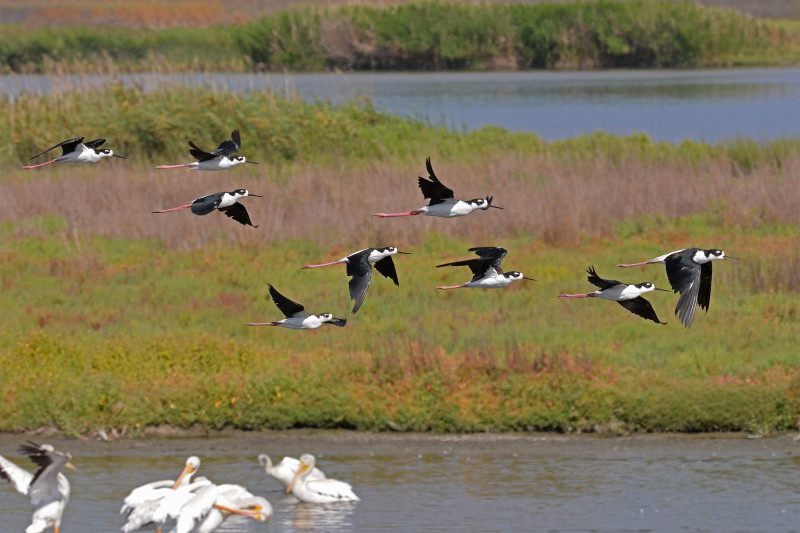
My favorite photo so far. Click on the photo below for a larger view of the American White Pelican (Pelecanus erythrorhynchos).
I’m still trying to figure out this lens. For f/2.8, the entire bird is pretty sharp and detailed in contrast to the smooth background.

Nikon D800, AF-S VR Nikkor 300mm f/2.8G IF-ED II, ISO 160, 300mm, f/2.8, 1/2,000s
Almost got fooled on this one. At first, I thought this was a Baird’s Sandpiper. The body looks almost spot-on. However, the range map didn’t match. Also, the legs on this bird seemed to be yellower. Could be the way the light is falling on the bird.
However, a closer look at similar species led me to the Least Sandpiper.
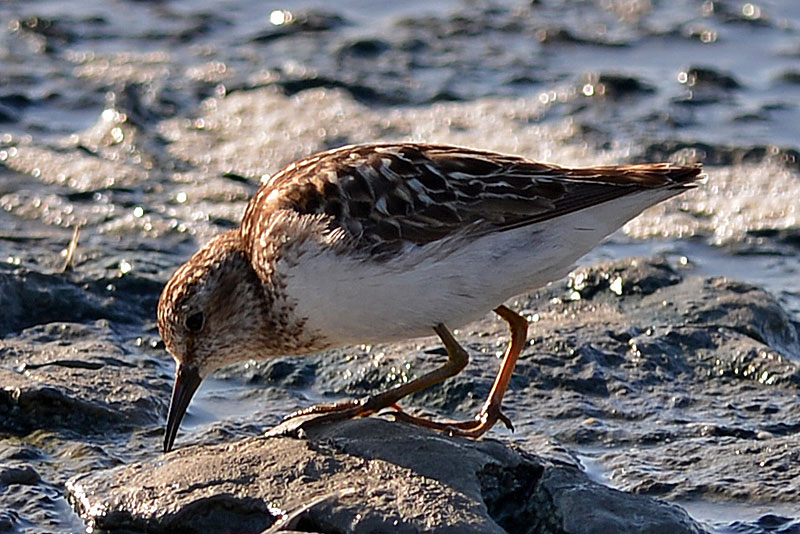
Nikon D800, AF-S VR Nikkor 300mm f/2.8G IF-ED II, ISO 100, 300mm, f/5, 1/400s
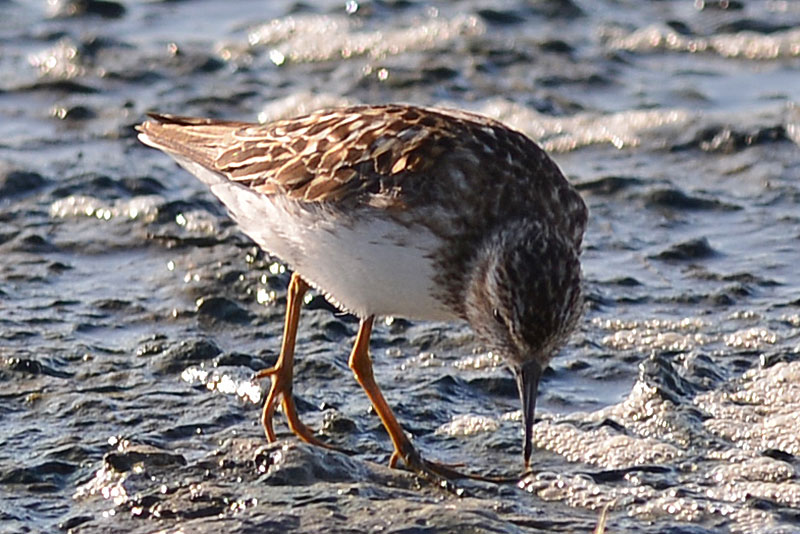
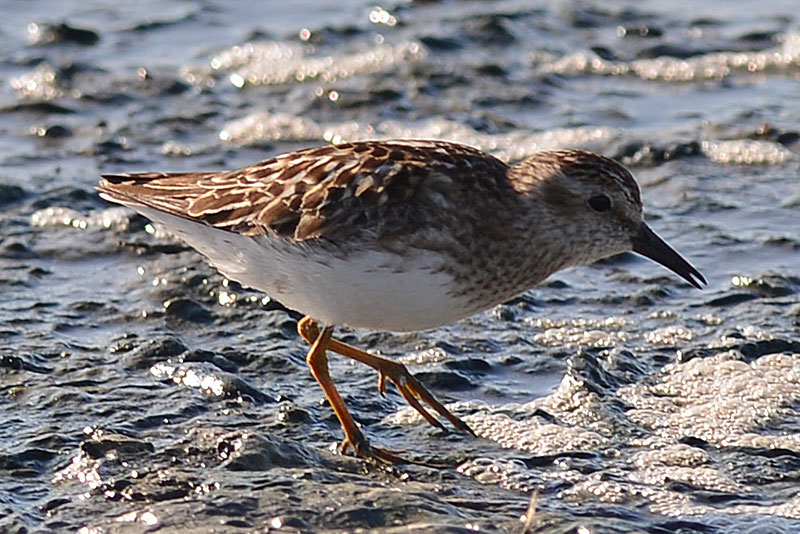
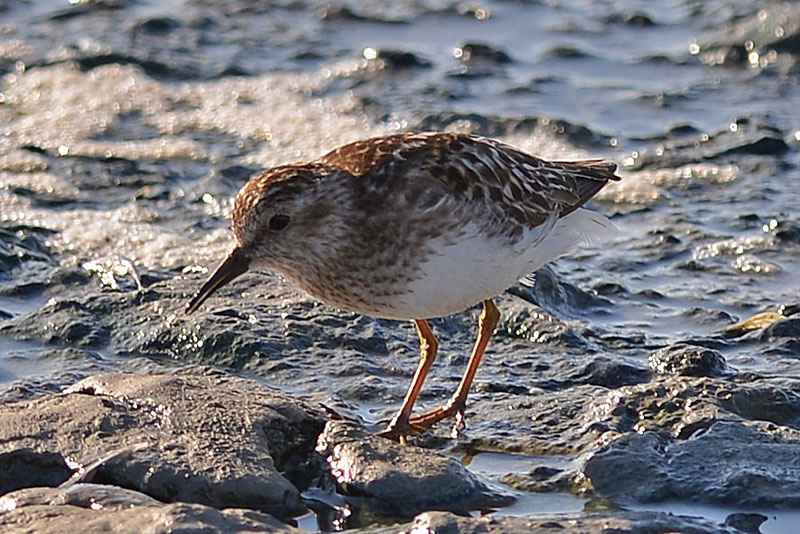
Before I started photographing birds, I didn’t pay much attention to them. However, after spending a few weeks at the Shoreline Regional Wildlife Area, I’ve come to appreciate the diversity of birds that call the baylands home.
Part of the fun is identifying the bird. I’ve been using the All About Birds guide from the Cornell Lab or Ornithology. This should be a Bonaparte’s Gull.

Nikon D800, AF-S VR Nikkor 300mm f/2.8 IF-ED II, ISO 100, 300mm, f/5, 1/400s
The difficulty for a beginner is that two different looking birds could be the same species. On the bird below, its mottled head only contains a trace of black. Yet, it appears to be a Bonaparte’s Gull as well.

Nikon D800, AF-S VR Nikkor 300mm f/2.8 IF-ED II, ISO 100, 300mm, f/5, 1/400s
The sky cleared. With a clear view of the moon, I set up the camera and 300mm lens on a tripod. Skipped the 1.7 teleconverter.
The handheld shot from a few nights ago really isn’t bad. However, in tonight’s photo, I can really see all the craters along the edge of the moon.
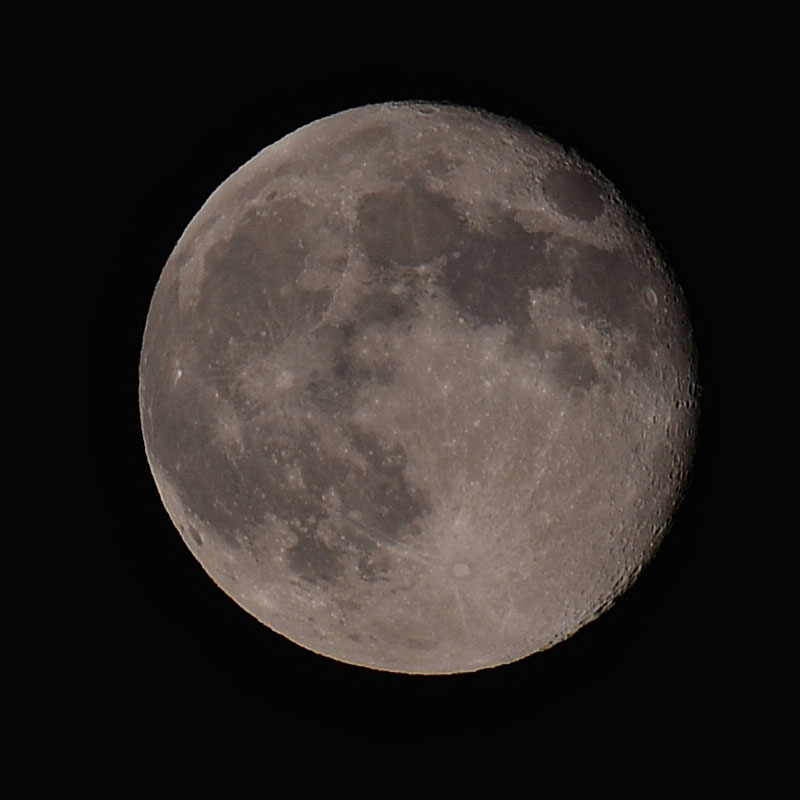
Nikon D800, AF-S VR Nikkor 300mm F/2.8G IF-ED II, ISO 100, 300mm, f/8, 1/200s
I experimented with different exposures. Seems that leaving it slightly underexposed preserved the most details.




















